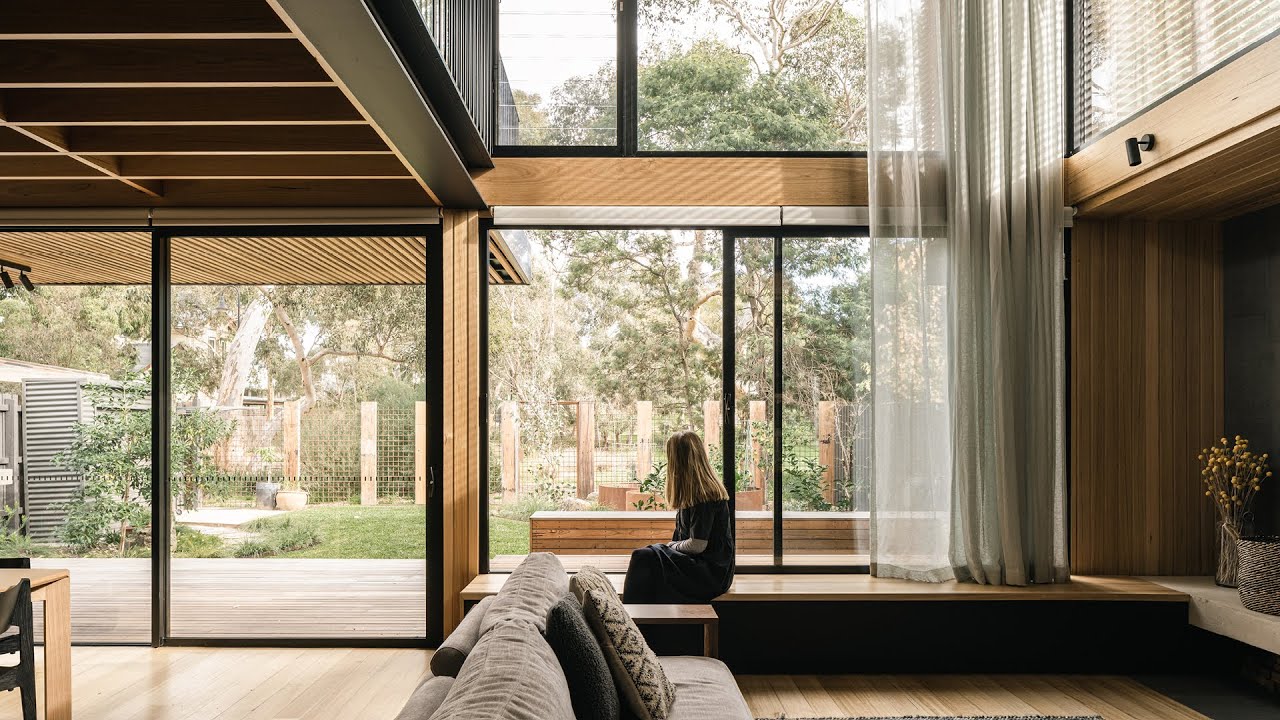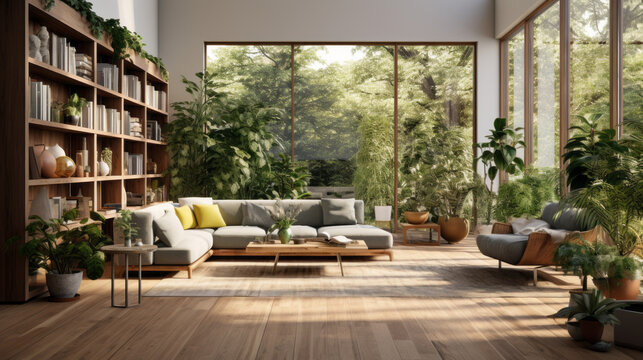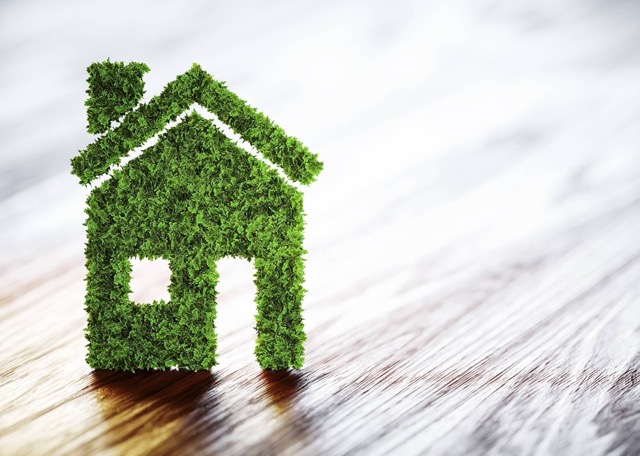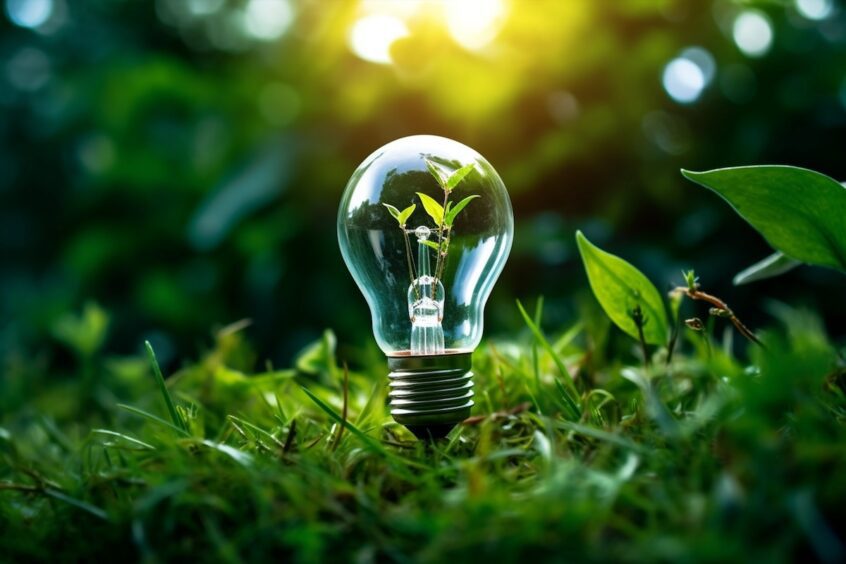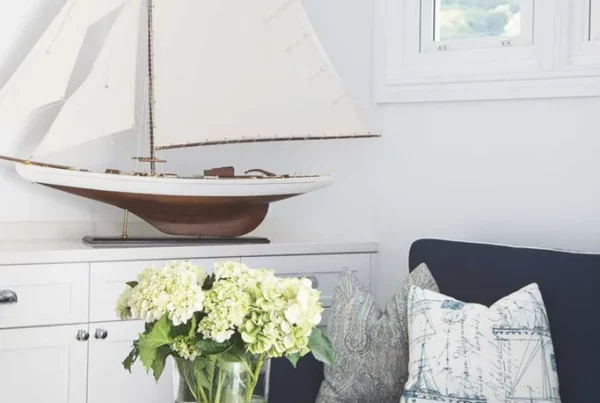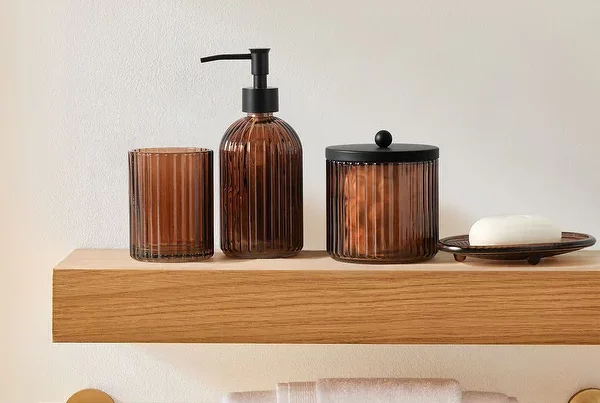Incorporating biophilic design into your home can enhance your living environment and promote well-being by integrating natural elements and improving air quality. This article provides practical steps for transforming your space through biophilic design principles, choosing sustainable materials, and creating an indoor garden, ultimately fostering a healthier lifestyle.
By exploring these strategies, you can make informed decisions that not only elevate the aesthetics of your home but also contribute to its energy efficiency and your overall health. Whether you’re looking to reduce your carbon footprint or simply create a serene retreat, this guide offers valuable insights to help you achieve your goals.
Table of Contents
Incorporate Biophilic Design for Enhanced Wellbeing
In an increasingly urbanized world, the connection between nature and human wellbeing has garnered significant attention. Biophilic design, an approach that seeks to integrate natural elements into our built environments, plays a pivotal role in enhancing physical, mental, and emotional health. By prioritizing the incorporation of natural elements into our living spaces, we can foster a sense of tranquility, improve productivity, and cultivate a rejuvenating atmosphere.
Understanding Biophilic Design
At its core, biophilic design embraces the innate human affinity for nature. This design philosophy goes beyond mere aesthetics; it champions the mental and emotional benefits derived from exposure to natural environments. Research has shown that interaction with natural elements can reduce stress, enhance mood, and even improve cognitive functions. By creating spaces that reflect these principles, homeowners can experience a profound impact on their overall wellbeing.
Key Elements of Biophilic Design
To successfully integrate biophilic design into your home, consider incorporating the following elements:
- Natural Light: Maximizing daylight exposure can help regulate circadian rhythms, reduce energy consumption, and promote a sense of well-being. Large windows, skylights, and glass doors foster seamless indoor-outdoor connections.
- Natural Materials: Utilize materials such as wood, stone, and clay that resonate with the natural world. Not only do these materials have aesthetic appeal, but they also contribute to a healthier indoor environment.
- Indoor Plants: Incorporating greenery indoors can purify the air and add life to the space. Consider various types of plants, from tall potted trees to hanging gardens, to introduce diverse textures and colors.
- Nature-Inspired Patterns: Use design patterns and motifs that mimic natural forms, such as flowing lines and organic shapes, to enhance the overall visual appeal and establish a connection to the environment.
- Water Features: Adding elements like indoor fountains can create a serene ambiance through the soothing sound of flowing water, further reinforcing nature’s calming effects.
The Emotional and Psychological Benefits
Incorporating biophilic design has been linked to various emotional and psychological benefits. For instance:
- Stress Reduction: Exposure to natural elements has been shown to lower cortisol levels, leading to diminished stress and a more relaxed state of mind.
- Enhanced Focus: Workspaces designed with biophilic principles enable improved concentration and productivity, as natural views and elements can stimulate creativity.
- Improved Mood: Nature fosters feelings of happiness and wellness. Arranging spaces to include views of greenery or natural materials can evoke a sense of belonging and comfort.
Practical Steps to Implement Biophilic Design
Transforming your space with biophilic design involves thoughtful planning and creativity. Here are some practical steps to get started:
- Assess Your Space: Identify areas in your home that lack natural light or greenery. Consider how you can enhance these spaces with biophilic elements.
- Choose a Focal Point: Select a specific natural feature, like a large window view of a garden or a prominent indoor plant, to serve as the centerpiece of your design.
- Integrate Nature Gradually: Start small by adding a few plants or using natural materials in key areas, and expand your biophilic design over time.
- Consult a Professional: If the concept of biophilic design seems overwhelming, consider reaching out to an interior designer with expertise in this area.
By incorporating biophilic design principles, you create spaces that not only enhance the aesthetic value of your home but also contribute significantly to your overall wellbeing. To dive deeper into the positive impacts of biophilic design, you might explore the findings presented by the American Psychological Association.
As we transition towards a lifestyle that values harmony with nature, the exploration of sustainable and well-designed spaces becomes increasingly important. In the next section, we will examine ways to choose sustainable materials for a greener home.
Choose Sustainable Materials for a Greener Home
Building or renovating your home with sustainable materials not only benefits the planet but also enhances your living environment. By making informed choices about the materials you use, you can reduce your carbon footprint and create a healthier space for your family. Below, we dive into various sustainable materials, their characteristics, and tips on how to integrate them into your home design.
1. Bamboo: A Fast-Growing Renewable Resource
Bamboo stands out as one of the most sustainable materials available today. It grows incredibly fast—up to three feet per day—and does not require pesticides or fertilizers. Here’s what makes bamboo a fantastic choice for various applications:
- Durability: Bamboo is known for its strength; it can be as hard as some hardwoods, making it suitable for flooring and furniture.
- Versatility: From flooring and cabinetry to textile use, bamboo boasts numerous applications in home design.
- Eco-Friendly Options: Ensure the bamboo products are certified by organizations like the Forest Stewardship Council (FSC) to confirm that they are sourced sustainably.
2. Reclaimed Wood: Giving New Life to Old Lumber
Using reclaimed wood not only reduces the demand for new lumber but also adds a unique character to your home. By repurposing wood from old buildings, barns, or even furniture, you’re making an environmentally responsible choice that brings history and charm into your space.
- Carbon Footprint Reduction: Reclaimed wood minimizes waste and reduces the carbon footprint associated with new production.
- Distinct Aesthetic: Each piece of reclaimed wood carries its own story, adding warmth and individuality to interior designs.
- Quality Assurance: Old-growth wood is often denser and more durable than newly harvested lumber, providing superior longevity.
3. Natural Stone: Timeless Elegance and Durability
Natural stone materials, such as granite, slate, and limestone, are excellent for adding a touch of elegance to various areas. They are naturally abundant, and when sourced responsibly, can greatly reduce environmental impact.
- Low Maintenance: Stone surfaces are incredibly durable and require minimal maintenance compared to synthetic materials.
- Thermal Efficiency: Natural stone has excellent insulating properties, helping to regulate indoor temperatures.
- Aesthetic Variety: With a range of natural colors and textures, stone can seamlessly integrate into any design scheme.
4. Recycled Materials: Innovative Solutions for Eco-Conscious Consumers
Recycled materials offer a creative way to contribute to sustainability. From reclaimed glass to recycled metals, these materials can provide stunning and functional designs while promoting resource conservation.
- Glass: Incorporating recycled glass in countertops, tiles, or decor can create visually striking features in your home.
- Metals: Recycled aluminum or steel can be used in furniture, roofing, and siding, providing durability and modern aesthetics.
- Creative Applications: Consider using recycled materials for art installations, which can represent your commitment to sustainability while enhancing your home’s beauty.
5. Eco-Friendly Insulation: Comfort Meets Sustainability
Insulation is crucial for energy efficiency, and choosing eco-friendly options can significantly reduce your home’s environmental impact. Materials such as made from sheep’s wool, cellulose (recycled paper), or hemp provide excellent thermal performance while being biodegradable or sourced sustainably.
- Energy Efficiency: Eco-friendly insulation helps regulate indoor temperatures better, reducing the need for excessive heating or cooling.
- Healthier Indoor Air: These materials often contain fewer chemicals, contributing to better home air quality.
As you embark on your journey to create a greener home, integrating these sustainable materials is crucial. Each choice not only reflects your commitment to the environment but also promises a home that is stylish, comfortable, and eco-friendly. Next, let’s explore how you can create an indoor garden to enhance your indoor air quality and serenity.
Create an Indoor Garden for Fresh Air and Calm
Creating an indoor garden is a wonderful way to enhance your living environment, offering not only aesthetic appeal but also significant benefits to your health and well-being. An indoor garden serves as a natural air purifier and a serene sanctuary, promoting calmness amid the hustle and bustle of daily life. This section delves into how you can design an engaging indoor garden that contributes to a tranquil atmosphere and improves indoor air quality.
Why You Should Start an Indoor Garden
Indoor gardens bring the beauty of nature inside, creating a soothing focal point in any room. Here are some compelling reasons to incorporate an indoor garden into your home:
- Improved Air Quality: Plants can absorb toxins and release oxygen, helping to purify the air you breathe. This is particularly beneficial in urban environments where air quality may be compromised.
- Stress Reduction: Studies have shown that being around plants can reduce stress and anxiety levels, promoting mental calmness and overall well-being.
- Aesthetics: An indoor garden can beautifully enhance the decor of your home, allowing for creativity and personalization in your space.
- Connection to Nature: Bringing greenery into your home can help you feel more connected to the natural world, which is essential for emotional health.
Selecting the Right Plants
When choosing plants for your indoor garden, consider factors such as light availability, space, and your ability to care for the plants. Here are some plants that thrive indoors and offer unique benefits:
- Snake Plant (Sansevieria): A hardy plant that requires minimal light and water, known for its air-purifying qualities.
- Pothos (Epipremnum aureum): Fast-growing and forgiving, pothos can thrive in various light conditions and are excellent for reducing indoor pollutants.
- Peace Lily (Spathiphyllum): Recognized for its ability to enhance indoor humidity and remove toxins, this plant also produces beautiful white blooms.
- Aloe Vera: Not only is it easy to care for, but its gel is also known for soothing burns and skin irritations, making it a practical addition to your garden.
Designing Your Indoor Garden
Your indoor garden can be designed in a way that reflects your personal style and fits your available space. Here are some creative ideas for designing an indoor garden:
- Use Vertical Space: If you’re short on space, consider vertical gardening techniques. Wall planters or shelves can create stunning displays without occupying much floor space.
- Indoor Plant Terrarium: A terrarium can be a visually striking way to showcase a variety of small plants while creating a mini-ecosystem.
- Hanging Gardens: Use hanging planters to draw the eye upward, creating a lush green canopy in your home.
- Indoor Herb Garden: If you’re also interested in cooking, consider growing an indoor herb garden. Fresh herbs add flavor to meals and are easy to grow on a sunny windowsill.
Maintaining Your Indoor Garden
Once your indoor garden is established, regular care is vital to ensure its longevity and vitality. Here are key maintenance tips:
- Watering: Understand the watering needs of your plants; overwatering is a common mistake. It’s essential to let the topsoil dry out between waterings for many indoor plants.
- Light Conditions: Regularly assess the light conditions in your home. Rotate your plants to ensure even growth and prevent one side from becoming leggy.
- Fertilization: During the growing season, use a balanced fertilizer to feed your plants. This helps provide the necessary nutrients for thriving growth.
- Pest Management: Keep an eye out for pests. Natural remedies like neem oil can be effective without introducing harsh chemicals into your home.
Creating an indoor garden can be an incredibly rewarding endeavor, providing not just fresh air but also a peaceful retreat within your home. The lush greenery and vibrant colors will elevate your mood and enhance the overall ambiance of your space.
For more in-depth insights into indoor gardening, consider visiting The Sill, which offers numerous tips and detailed guidance for new plant parents.
As you explore the wonders of your indoor garden, you may find inspiration to further enhance your living space by utilizing natural light.
Utilize Natural Light to Boost Energy Efficiency
In any energy-efficient home design, natural light plays a pivotal role not just in reducing energy costs but also in enhancing the ambiance and overall well-being of the living space. By smartly incorporating natural light, homeowners can achieve a significant reduction in reliance on artificial lighting, thereby contributing to lower utility bills and a smaller carbon footprint. Here’s how you can effectively harness natural light in your home to boost energy efficiency.
Strategic Window Placement
The placement of windows is crucial in maximizing daylight exposure. By strategically positioning windows to face the sun, particularly in colder climates, you can significantly reduce heating needs in the winter while maintaining a comfortable atmosphere.
- South-facing windows: Capture the most sunlight during the day, making them ideal for living spaces.
- East-facing windows: Ideal for kitchens and bedrooms, as they provide morning sunlight to energize the home.
- West-facing windows: Often receive harsh afternoon sunlight; consider using shades or films that diffuse this light.
Architectural elements like overhangs and awnings can help to control the amount of sunlight entering your home, thus enhancing the overall efficiency of your energy-conscious design.
Energy-Efficient Glazing Options
Upgrading to energy-efficient windows can dramatically enhance your ability to utilize natural light while minimizing heat loss. Look for windows with:
- Low-E (Low Emissivity) coatings: These coatings reflect heat while allowing sunlight to enter, making the home warmer without the excess heat.
- Double or triple glazing: Additional layers of glass improve insulation and reduce energy costs.
- Gas fills: Window panes filled with inert gases like argon or krypton offer improved thermal performance.
Energy-efficient windows not only facilitate plentiful natural light but also improve comfort throughout the year by reducing draftiness.
Open Floor Plans and Light Colors
Open floor plans allow for greater light flow throughout the interior, making a home feel larger and more welcoming. Use less obstructive wall designs or strategically place furniture to avoid blocking light from windows.
Furthermore, utilizing light-colored walls and furnishings can help to reflect more light throughout your home. This means that even if sunlight is limited, the interior will feel brighter and more inviting.
Incorporating Skylights and Light Tubes
If you’ve reached the limits of your wall space for windows, consider installing skylights or light tubes. These fixtures can transform a dark space into a radiant area filled with natural light.
Skylights are particularly beneficial in rooms where wall windows are impractical, while light tubes can bring sunlight into even the most interior spaces. Both options enhance energy efficiency by reducing the need for artificial lighting.
Mindful Use of Landscaping
Don’t forget that the positioning of trees, shrubs, and other landscaping elements can either enhance or hinder natural light. Choose deciduous trees to provide shade in the summer and let sunlight through in the winter.
Moreover, using reflective surfaces such as paved pathways or light-colored rocks can scatter sunlight into darker areas of your home, amplifying the light that enters.
Embrace Biophilic Design
By integrating biophilic design elements in conjunction with natural light strategies, you can create a synergistic effect that not only enhances energy efficiency but also promotes well-being. Allowing for abundant daylight to spill into areas adorned with natural materials and plants can significantly improve your living environment’s aesthetics and health benefits.
In conclusion, utilizing natural light not only results in energy efficiency but also promotes a healthier, more vibrant living space. For further insights on enhancing your home’s energy efficiency, check out resources available at Energy Saver.
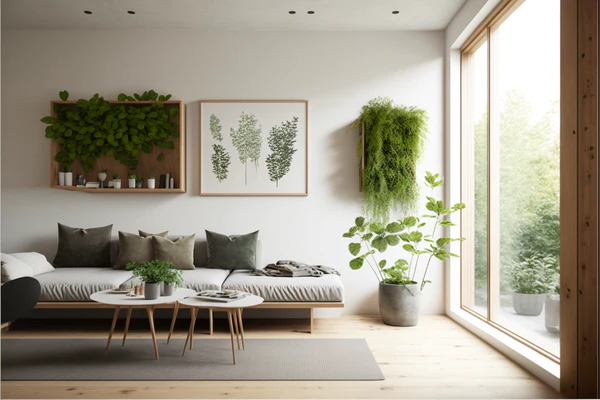
Incorporating biophilic design into your home can significantly enhance your well-being by fostering a connection with nature through natural elements like plants, views of greenery, and the use of natural materials. Start by assessing your space for opportunities to integrate biophilic elements gradually, such as adding indoor plants or utilizing sustainable materials like bamboo and reclaimed wood to create a comfortable and aesthetically pleasing environment.
Additionally, maximizing natural light through strategic window placement, energy-efficient glazing, open floor plans, and thoughtful landscaping can improve energy efficiency and atmosphere. By embracing these design principles, you create a healthier living space that not only looks inviting but also contributes positively to your overall well-being. Explore resources for practical guidance and further insights on biophilic design and energy efficiency.


